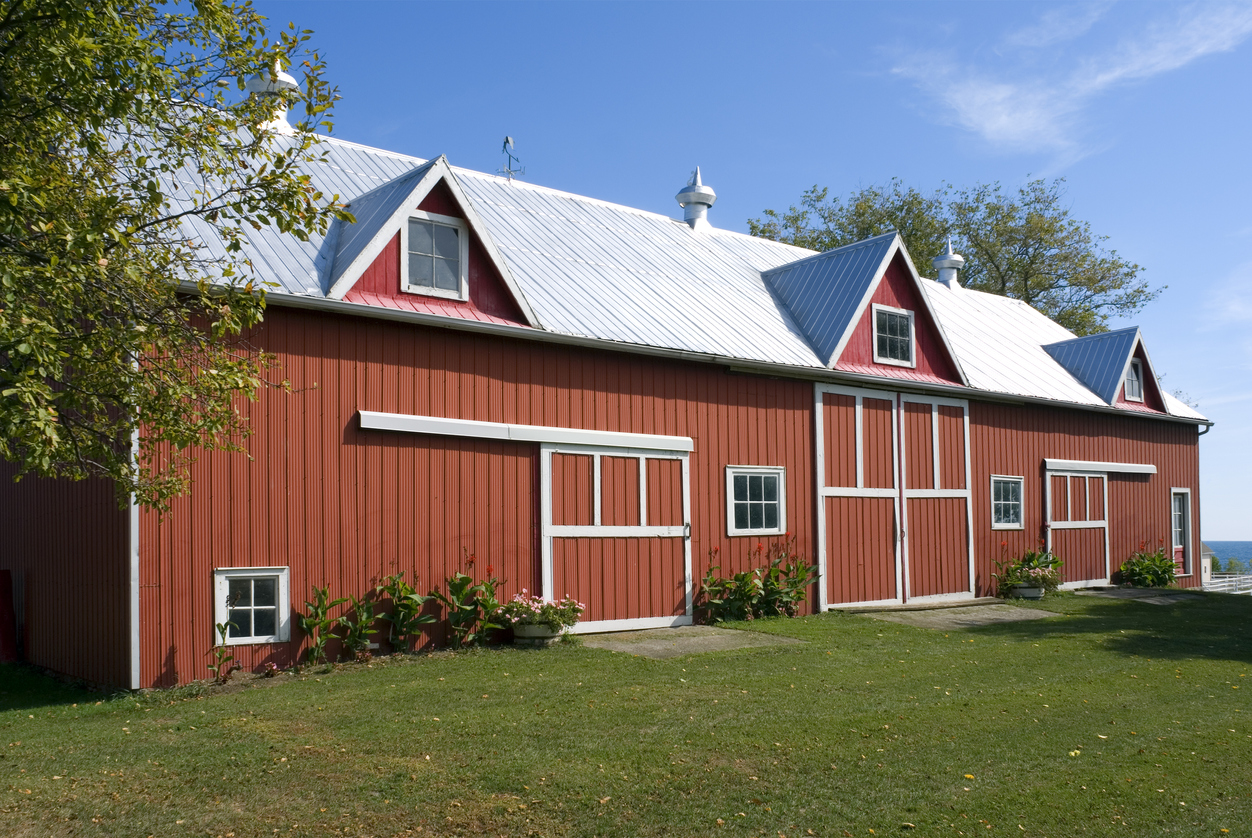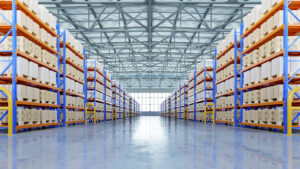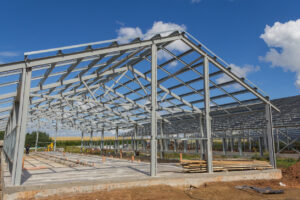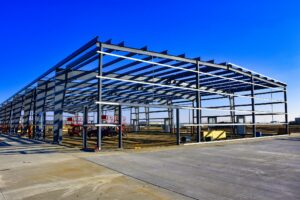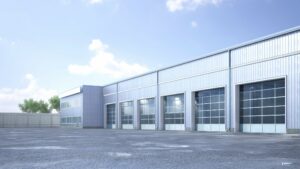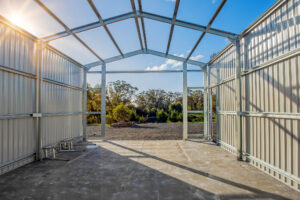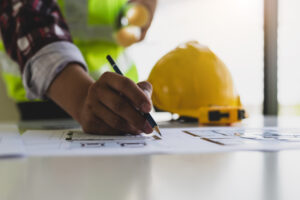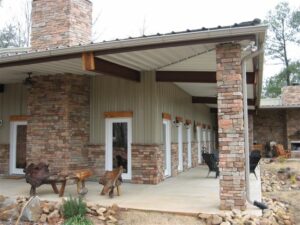Welcome to our comprehensive guide on the cost of building a distribution center. If you’re considering constructing a distribution center for your business, it’s important to understand the various factors that can influence the overall cost.
In this article, we’ll dive into the basics of warehouses and distribution centers, explore the key factors that affect construction costs, and provide a breakdown of the expenses you can expect to incur. Let’s get started.
Table of Contents:
Understanding the Basics of a Distribution Center
About 9% of the current jobs in America are in the warehouse and manufacturing industries.
What Is a Distribution Center?
A distribution center is a large facility that serves as a central node in the supply chain network. It is responsible for receiving, storing, and distributing products. Distribution centers typically house a wide range of goods, including raw materials, finished products, and spare parts.
Furthermore, distribution centers often incorporate advanced technologies to enhance their operations. Automated storage and retrieval systems, conveyor belts, and inventory management software are commonly used to increase accuracy, speed, and capacity within the facility. These technological advancements not only improve efficiency but also enable distribution centers to adapt to changing market demands and customer expectations.
Importance of a Distribution Center in Supply Chain
The importance of a distribution center in the supply chain cannot be overstated. By providing a centralized location for inventory management, consolidation, and distribution, it enables companies to streamline their operations and reduce costs. Distribution centers play a vital role in ensuring the smooth flow of goods, minimizing lead times, and improving overall customer satisfaction.
In addition to their operational benefits, distribution centers also contribute to sustainability efforts within the supply chain. By strategically locating distribution centers closer to end users or implementing eco-friendly practices such as energy-efficient lighting and packaging materials, companies can reduce their carbon footprint and minimize environmental impact. This focus on sustainability not only aligns with corporate social responsibility initiatives but also resonates with environmentally conscious consumers, further enhancing brand reputation and loyalty.
Factors Influencing the Cost of Building a Distribution Center
Several key factors can significantly impact the cost of building a distribution center. Understanding these factors is essential for effective budgeting and planning. Let’s take a closer look at each one:
Size and Capacity of the Distribution Center
The size and capacity of the distribution center will have a significant impact on construction costs. Larger facilities require more materials, labor, and equipment, resulting in higher expenses. Additionally, the layout and design of the facility should be optimized to maximize storage capacity and operational efficiency.
When considering the size of a distribution center, it’s crucial to factor in future growth projections. Building a facility with room for expansion can help avoid the need for costly renovations or relocations down the line. Moreover, implementing advanced technologies like automated storage and retrieval systems can enhance the efficiency of space utilization, potentially reducing overall operational costs in the long run.
Steel distribution centers or warehouses are often some of the best options for cost-effectiveness and future expansion due to the modularity, rapid construction, and lower maintenance of prefabricated steel buildings. Learn more about the typical costs that go into a 100 x 200 steel distribution center. We go more in depth into the various factors influencing the cost, pricing structure, and final cost breakdown with some tips included on how to reduce costs if applicable with your steel distribution center project.
Location and Land Costs
The location of the distribution center is an important consideration. Real estate prices can vary significantly depending on the region, proximity to transportation networks, and local regulations. Additionally, factors such as land acquisition, site preparation, and infrastructure development can contribute to the overall cost.
Choosing a strategic location for the distribution center can offer various advantages beyond cost considerations. Proximity to major highways, ports, or rail hubs can streamline transportation logistics, reducing lead times and improving supply chain responsiveness. Furthermore, being located near a skilled labor pool can enhance workforce productivity and retention, ultimately impacting the operational efficiency and bottom line of the facility.
Construction Materials and Design
The choice of construction materials and the design of the distribution center can impact both the upfront and long-term costs. Opting for durable and energy-efficient materials may result in higher initial expenses but can lead to long-term savings in terms of maintenance and operational costs.
Integrating sustainable design practices into the construction of the distribution center can not only reduce environmental impact but also result in cost savings over the building’s life cycle. Features such as solar panels for energy generation, rainwater-harvesting systems, and high-efficiency insulation can lower utility expenses and enhance the overall sustainability profile of the facility. Additionally, investing in flexible design elements that allow for easy reconfiguration of space can accommodate future operational changes without significant additional costs.
Breakdown of the Construction Costs
When budgeting for a distribution center project, it’s essential to consider all the relevant expenses. Here, we’ll break down the construction costs into three main categories:
Pre-construction Expenses
Before the actual construction begins, several preconstruction expenses need to be factored in. This includes obtaining permits and approvals, conducting feasibility studies, hiring architects and engineers, and developing detailed construction plans. These preparatory activities play a crucial role in ensuring a smooth construction process and may account for a significant portion of the overall cost.
Obtaining permits and approvals is a necessary step to ensure compliance with local regulations and building codes. This process involves submitting applications, paying fees, and undergoing inspections to ensure that the proposed distribution center meets all requirements. Feasibility studies, on the other hand, assess the viability of the project by analyzing factors such as market demand, location suitability, and potential risks. These studies provide valuable insights that help in making informed decisions and avoiding costly mistakes.
Pro Tip:
SteelCo provides stamped drawings / building plans for each customizable steel distribution center even if coming to us just for PEMB building materials. These stamped drawings ensure an architect claims responsibility for the building blueprint and certain liabilities.
Hiring architects and engineers is another important aspect of preconstruction expenses. These professionals play a key role in designing the distribution center, ensuring that it meets the functional and operational requirements of the business. They create detailed construction plans that outline the layout, structural elements, and systems of the facility. These plans serve as a blueprint for the construction process, guiding contractors and subcontractors in their work.
Building and Installation Costs
The building and installation costs encompass the actual construction of the distribution center. This includes expenses related to site preparation, foundation construction, framing, roofing, electrical and plumbing systems, and HVAC installation. Additionally, costs associated with interior finishes, such as flooring, lighting, and shelving, should be considered.
Site preparation involves clearing the land, grading, and ensuring proper drainage. It may also include excavation work to prepare the foundation. Foundation construction is a critical step in ensuring the stability and durability of the distribution center. It involves pouring concrete or constructing a structural base that can support the weight of the building and withstand environmental factors.
Framing, roofing, and the installation of electrical and plumbing systems are essential components of the construction process. Framing provides the structural framework of the distribution center, while roofing protects it from the elements. Electrical and plumbing systems ensure the proper functioning of lighting, power, water supply, and sanitation within the facility. These systems require skilled labor and quality materials to ensure safety and efficiency. Interior finishes, such as flooring, lighting, and shelving, contribute to the functionality and aesthetics of the distribution center.
Choosing durable and suitable materials for flooring is crucial, as it needs to withstand heavy loads and constant movement of equipment. Proper lighting is essential for creating a safe and productive work environment, while shelving systems optimize storage space and facilitate efficient inventory management.
Interior Setup and Equipment Costs
Once the basic structure of the distribution center is in place, it’s necessary to invest in interior setup and equipment. This includes the installation of safety measures, security systems, racking systems, conveyor belts, forklifts, and other essential equipment. These expenses are critical for optimizing storage and handling operations within the facility.
Safety measures, such as fire suppression systems, emergency exits, and safety signage, are essential to protect employees and assets. Security systems, including surveillance cameras and access control systems, help prevent theft and unauthorized access. Racking systems provide efficient storage solutions, maximizing the use of vertical space. Conveyor belts and forklifts enable smooth movement of goods within the distribution center, enhancing productivity and reducing manual labor.
Investing in the right interior setup and equipment is crucial for the long-term success and efficiency of the distribution center. Careful consideration should be given to the specific needs of the business, as well as industry standards and best practices. By making informed decisions and allocating resources effectively, the construction costs can be optimized, resulting in a well-designed and functional distribution center.
Ongoing Operational Costs of a Distribution Center
Building a distribution center is only part of the equation. It’s important to account for the ongoing operational costs associated with running the facility. Here are a few key considerations:
When evaluating the ongoing operational costs of a distribution center, it’s crucial to delve deeper into the various elements that contribute to the overall expenses. By understanding the intricacies of these costs, businesses can make informed decisions to streamline operations and maximize efficiency.
Staffing and Maintenance Expenses
One of the significant ongoing costs of a distribution center is staffing. This includes salaries, benefits, training, and recruitment expenses for warehouse managers, supervisors, pickers, packers, and maintenance personnel. Additionally, regular maintenance and repair activities should be factored into the budget to ensure the facility’s smooth operation.
Effective workforce management is essential for optimizing operational costs while maintaining high productivity levels. By investing in employee training programs and implementing performance evaluation systems, businesses can enhance operational efficiency and reduce turnover rates, ultimately leading to cost savings in the long run.
Utility Costs
Distribution centers require a substantial amount of energy to operate. Electricity, heating, cooling, and lighting costs can significantly impact the overall operational expenses. Implementing energy-efficient technologies and practices can help reduce utility costs and minimize environmental impact.
Furthermore, conducting regular energy audits and exploring renewable energy sources such as solar power can not only lower utility expenses but also contribute to a more sustainable operational model. By prioritizing energy conservation initiatives, businesses can align cost-saving efforts with environmental responsibility, creating a win-win situation for both the company and the planet.
Inventory Management Costs
Managing inventory is a critical function of a distribution center. Costs associated with inventory tracking, storage, handling, and order fulfillment should be considered. Investing in inventory management systems and adopting efficient inventory control practices can help optimize these costs.
Utilizing advanced technologies like RFID tracking systems and automated inventory replenishment processes can revolutionize inventory management operations, leading to reduced carrying costs and improved order accuracy. By leveraging data analytics and real-time inventory monitoring tools, businesses can enhance inventory visibility and forecasting accuracy, ultimately driving cost efficiencies and improving customer satisfaction levels.

Conclusion
——
Check out these related articles:
> Exploring Different Warehouse Types
> What Is A Manufacturing Building? – Learn about “flex” industrial building or centers that can house everything from a distribution center, manufacturing space, offices, and more.










